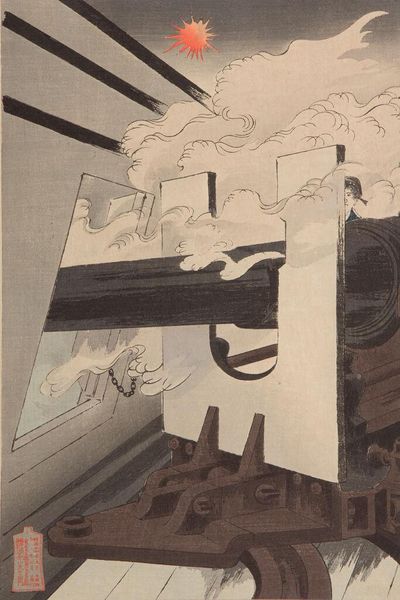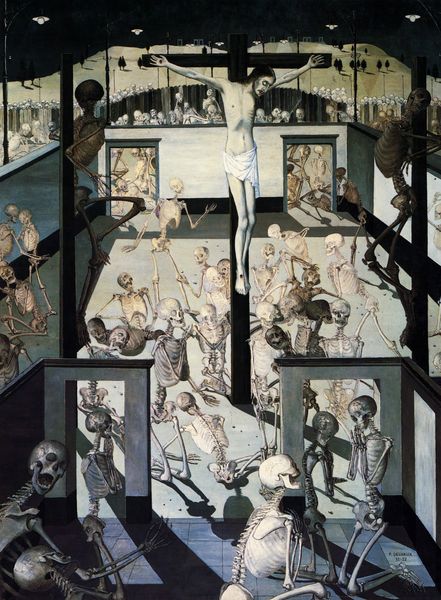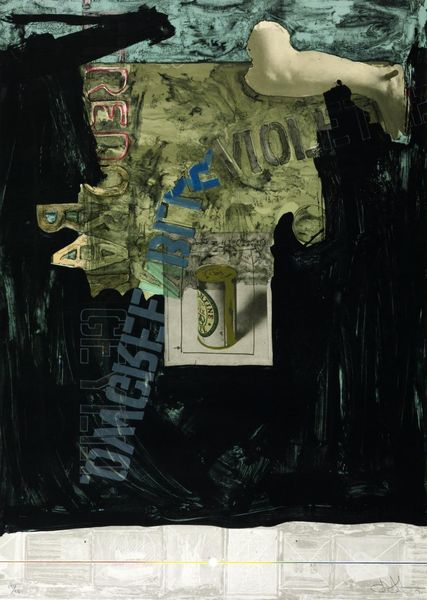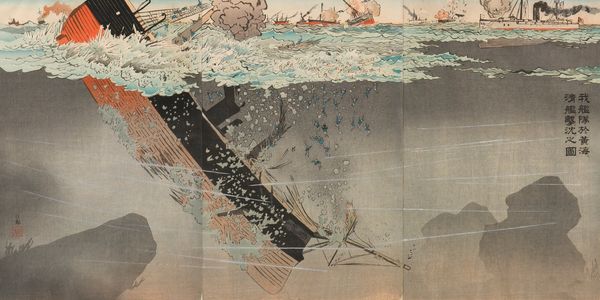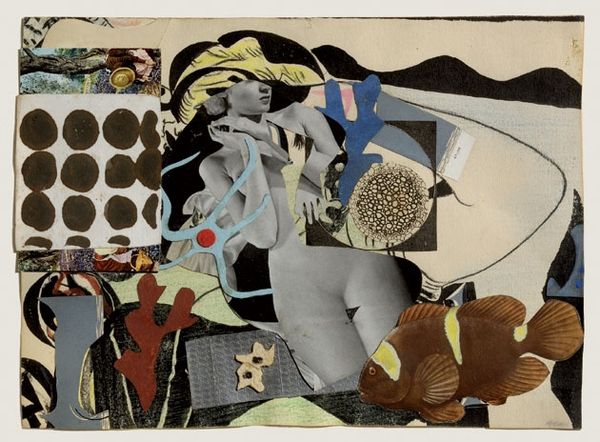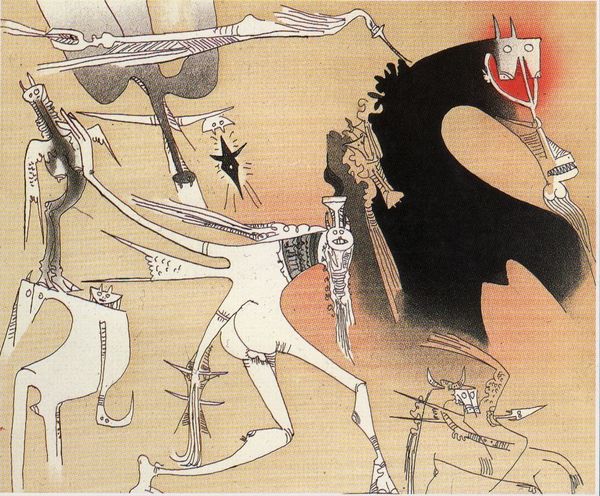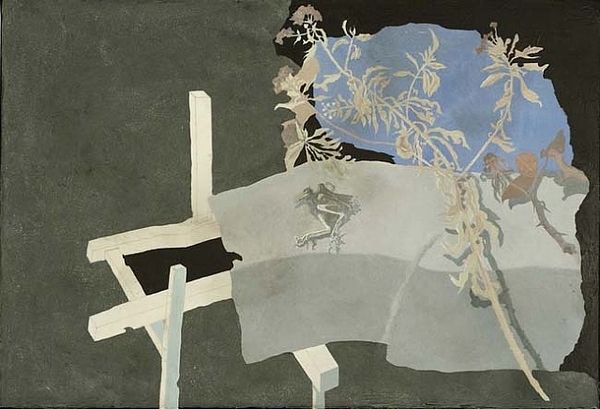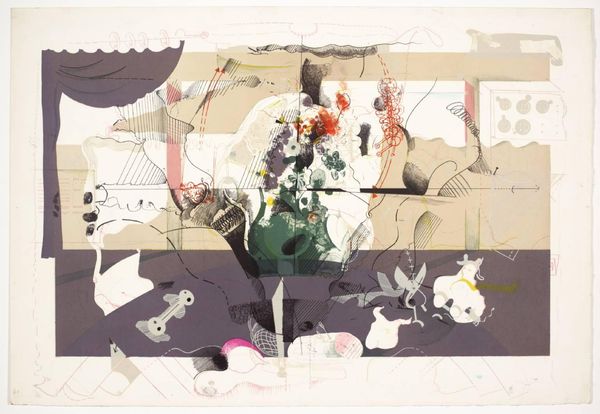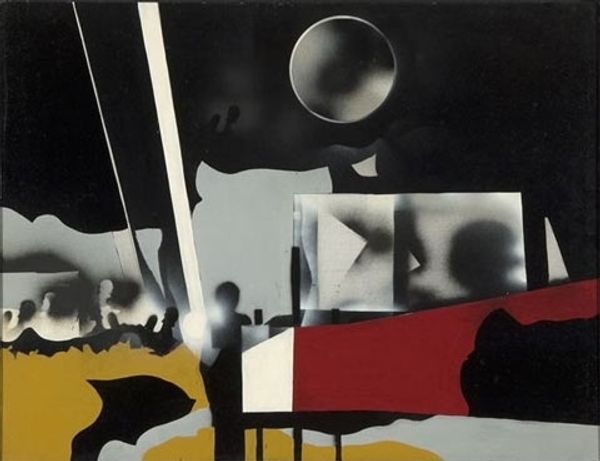
painting, acrylic-paint
#
contemporary
#
painting
#
landscape
#
perspective
#
acrylic-paint
#
figuration
#
history-painting
Dimensions: 188 x 167 cm
Copyright: Ivan Eyre,Fair Use
Editor: This is Ivan Eyre’s "Storm," painted in 1982 using acrylics. It's currently hanging at the National Gallery of Canada. The image is, well, quite busy and almost unsettling, with its contrasting scenes and strange juxtapositions. What do you see as the key elements in its composition? Curator: Note the calculated juxtaposition of conflicting spaces and perspectives. The eye struggles to reconcile the near domesticity of the foreground—cups, scattered papers, and clothed figures at a table—with the epic historical drama unfolding in the background, viewed through oddly shaped openings. Editor: It’s like different paintings forced into the same frame. Curator: Precisely. This fractured picture plane demands analysis. Eyre masterfully employs geometric abstraction alongside detailed figuration, creating a sense of visual tension. What effect do you think the muted, almost monochromatic palette contributes? Editor: It creates a kind of melancholic unity, despite the chaos. Everything is in the same key. Curator: Indeed. Consider how the flatness of the picture plane and lack of traditional perspective undermine any illusion of depth. It forces us to confront the painting as a constructed object. The recurring motifs – the partial figures, the architectural elements – become almost like linguistic signs. Editor: So you're saying the artist deliberately avoids narrative clarity? Curator: It appears so. Instead, he prioritizes formal relationships – shape, line, colour, and their interplay. This fracturing invites us to consider our role in constructing meaning from disparate elements. What resonates most with you? Editor: The painting, despite its initial discord, manages a strange harmony. Thinking of it in terms of formal relationships allows one to deconstruct the puzzle of the painting in its entire context. Curator: A rewarding observation. A reminder that meaning often emerges from the considered arrangement of purely visual elements.
Comments
No comments
Be the first to comment and join the conversation on the ultimate creative platform.
